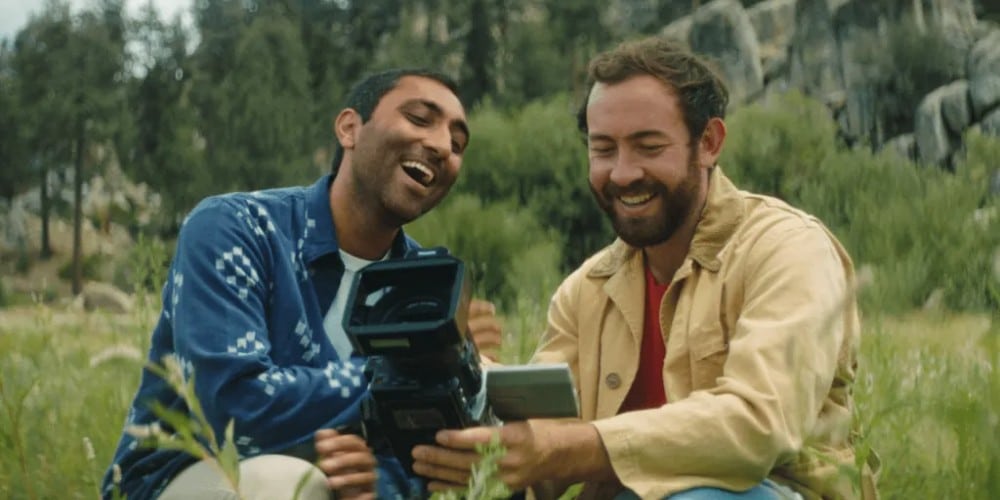Read also:
How to Watch FX Live Without CableHow To Watch AMC Without CableHow to Watch ABC Without CableHow to Watch Paramount Network Without CableA self-reflexive indie comedy for the COVID-19 era, Wes Schlagenhauf is Dying fails to amuse or entertain.
This review is part of our coverage of the 2022 Tribeca Film Festival.
Movies about filmmakers can easily turn into exercises in self-indulgence. But when they’re done right, they can be shining odes to the blood, sweat, and tears that go into making any feature film. The likes of American Movie and Brigsby Bear highlight ordinary people harboring a dedication to crafting cinema that transcends the art form itself. Even those with zero interest in cinema as an artform can get swept up in their universally appealing stories.
But when movies about movies fail, they fail hard. The premise devolves into an excuse for lazy meta-gags and name-dropping pop culture properties substitutes for humor. Wes Schlagenhauf is Dying fails too often. While some of its jokes and character beats do land, director Parker Seaman (who also wrote the script with Devin Das) ultimately delivers a feature that feels more like an in-joke than anything else. The kind of in-joke that isn’t very funny even to those who are supposed to get it.
Wes Schlagenhauf is Dying does at least begin at an interesting intersection between fiction and reality. Seaman, Das, and the titular Wes Schlagenhauf play fictional versions of themselves. As Dying begins, we see archival footage of the trio in the actual film, commercial, or short productions from over the years. Watching these three dudes connect to and stick with the art of filmmaking for so long makes their bond and their passion clear.

With the real-world groundwork laid, an entertaining fictional comedy can be built on top of that. Sadly, the entertainment proves fleeting.
The fiction begins in 2017, when Schlagenhauf, in the middle of shooting a beef jerky commercial, gives up on the trio and their ambitious dreams of breaking into Hollywood. When he returns to Boise, Idaho, Seaman, and Das are left with only each other. But their bond becomes strained once the COVID-19 pandemic hits. Worse, Schlagenhauf finally reaches out after years of silence because he has a severe case of this virus. This could be the end for him.
There’s only one response to this devastating news: a road trip. Seaman and Das not only decide to go to Idaho to see their former chum, the two commit to filming their exploits as the basis of a new documentary. It’s already a challenge traveling while trying to shoot a movie, never mind doing both amidst the early days of the ongoing pandemic. But things escalate even once the duo’s closely guarded secrets begin to surface.
Early in the trip, Seaman whips out a copy of the famous screenwriting book Save the Cat and explains to Das that their documentary needs to adhere to the proper three-act structure outlined in the text. He proceeds to reference key passages from the book at relevant moments in the movie. It’s a groan-worthy joke that’s been done better elsewhere, and repetition doesn’t do it any favors.
The Save the Cat bit is emblematic of Wes Schlagenhauf is Dying’s approach to meta-humor. It name-drops the hallmarks of cinematic narratives and the conventions of filmmaking and expects the dropping to be an acceptable gag in and of itself. It’s even used to cut off potential criticisms of the movie no matter how unlikely. D’Arcy Carden’s agent character, for instance, questions the two lead characters if they really want to pursue making a documentary about someone who isn’t part of the queer community.
Humor dedicated to defusing criticism rather than conjuring up gags does not make for a funny movie.
There’s no punchline here, it’s just a joke that assumes this microbudget indie would’ve been expected to carry the burden of cinematic LGBTQIA+ representation. Humor dedicated to defusing criticism rather than conjuring up gags does not make for a funny movie. The meta-humor gets particularly frustrating, though, when it comes to the question of who it’s meant for.
It’s doubtful the jokes will land for viewers unfamiliar with Save the Cat and other tools and processes of moviemaking. And moviegoers well-versed in elements like three-act structures will have doubtlessly have seen better renditions of these jokes elsewhere. While other movies sending up Hollywood like Bowfinger or Tropic Thunder embraced humor that could function on multiple levels, Wes Schlagenhauf is Dying’s jokes often fail to work on any level.
These problems with Wes Schlagenhauf is Dying’s meta-gags end up sabotaging the entire production since they comprise so much of the final film. Worse, a similar lack of creativity permeates parts of the production that have nothing to do with meta-jokes about filmmaking. Sight gags about struggling to find toilet paper during the pandemic are tiring, and the eventual conflict that drives a wedge between the two leads is predictable and flat.
Even the personalities the leads have developed for their fictional selves have more than a whiff of familiarity. Seaman has opted to make himself so much like Jake Johnson that it’s distracting. At least the titular Wes Schlagenhauf’s simultaneous channeling of Wyatt Russell and Will Forte’s energy has its share of amusing moments, even if he’s not on-screen long enough to make an impact.
Throughout Wes Schlagenhauf is Dying, assorted characters urge aspiring filmmakers to push on towards new and exciting ideas. If only it had listened to its own advice. Even at just 74 minutes, the exhausting lampshading and name-dropping make it feel endless. Movies about moviemaking can be truly special. They can also be as utterly lifeless, as is, unfortunately, the case with Wes Schlagenhauf is Dying.